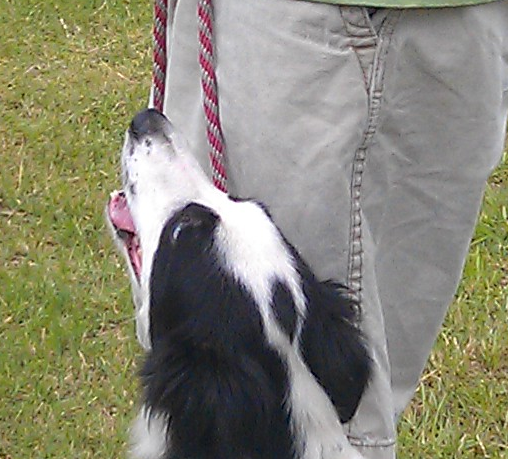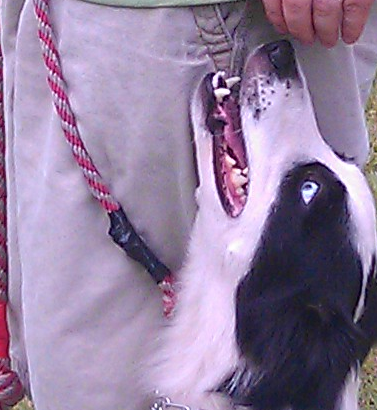Natural heel position for your dog is the one you should use. You can see by the photos below the difference in a “Natural Heel Position” (one where the dog was placed in heel position and looked up in a position that was comfortable for her as it was the position she chose)

and an “Unnatural Heel Position” (one where I used food to create a position that would be a lot of work for the dog to maintain)

Looking at these two photos spoke volumes to me in terms of fairness to our dogs and in my head I am hearing, “Pick your battles!” The natural position has several good points:
Natural Position Pros
1. It will be easy to build value to.
2. The dog will default to it.
3. Being comfortable will mean longer periods of sustained attention during heeling.
4. It will not create long term training battles.
Natural Position Cons
1. May not be as flashy.
Ok, so I couldn’t think of any “Cons” other than the flash, but let’s be real…flashy gets attention and we all at some point wish we could get that flash in our own dog. The downside, we chase rainbows. We work and work on the flash rather than appreciating and working with what our dog could easily give us naturally, comfortably and happily. We also tend to focus so hard on the flash we forget about the driving force behind it…attitude. When you forget to reward attitude, it’s the first thing to go and the first thing you will miss. Now don’t get me wrong, I want my dogs head up and watching me when we heel, but I want the dog to tell me what is comfortable and easily attainable for them, that is what I am going to choose to reward, rather than attempt to create an artificial look that will require MUCH higher standards for the dog.
Try this:
Ask your dog to sit, hold his favorite toy or food treat in your hand close to your chin. Move yourself into heel position. How long can your dog hold this position? Does he move? Move the desired object down your body and watch your dogs head, neck and eyes…he is looking, but doing it where he is comfortable. His attention is just as focused, but he is telling you what works for him.
Now try this:
Stand up. Lean your head back and look at the ceiling and count to 100. Now, look at the same spot on the ceiling by just looking up. Which was easier on you?
If we allow our dogs to tell us what is natural for them, we can easily tell them what we want and you will speed up your heeling training and be much less frustrated in the long run. Remember, life’s stressful, training your dog shouldn’t be.
No comments:
Post a Comment